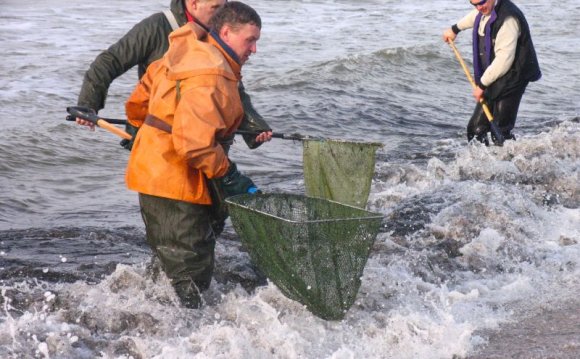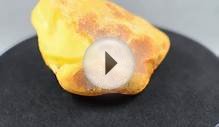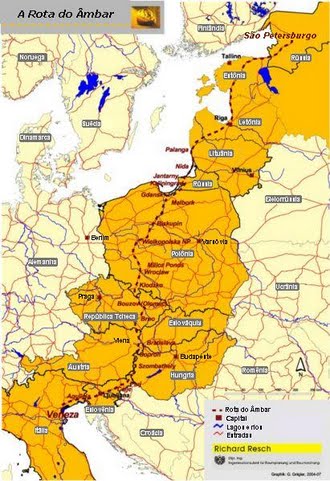
Origins"Amber (Lith. gintaras), found on the Baltic Sea shores, was and is highly treasured and is the national gem of Lithuania. It is a fossil resin" which came from the sap of "several varieties of pines. It is believed, that about 60 million years ago, these pines grew in the subtropical forest" in the present location of the Baltic Sea. "For unknown reasons these pines produced excessive amounts of" sap. "The overproduction may have been nature's method of healing natural injuries caused by storms, lightning, pests and diseases, or perhaps it was caused by a sudden change of climate." Sap "dropped to the forest ground, was embedded into the local sediments, compressed by the overlying deposits, and in time became fossilized. Numerous fragments of both plant and animal life were trapped in the sticky" sap "and thereby preserved. These inclusions make it possible to identify the plants and animal life of the period." The original location of the deposits of Baltic amber "are not known. It is believed that these deposits were removed, transported and redeposited by later movements of the sea, possible including major waves and currents, and by ancient rivers. The sandy amber formation called "blue earth" now occurs in certain places at the bottom of the Baltic Sea and the Courish Lagoon and on the Samland Peninsula of former East Prussia. Subsequent glaciers of the" Ice Ages "also transported and redeposited amber. This amber is found in Lithuania, mostly along the banks of the Nemunas, Streva, and Sirvinta rivers and the Lukstas and Plateliai lakes." |
Physical PropertiesBaltic amber is "considered to be the best variety of amber. It occurs irregularly as rounded nodules, drops, grains, and stalactites, weighing up to 200 g; a piece weighing more than 1 or 2 kg is rare; the largest lumps recorded are 10 and 20 kg." Baltic amber "is usually of a yellow, honey-like color, but may occur in many shades from pale yellow to dark brown. White pieces with a yellowish or bony tint are rare, and reddish, bluish and greenish tinted pieces are very rare. Some pieces of Baltic amber are transparent and clear, and others are cloudy and opaque." Amber "becomes electrically charged when subjected to friction. It burns with a bright flame and gives off a pleasant pine fragrance." |
Amber Artifacts"Ancestors of the present Lithuanians lived close to the Baltic Sea shores and were familiar with... |
RELATED VIDEO




 The Amber Road was an ancient trade route for the transfer of amber. As one of the waterways and ancient highways, for centuries the road led from Europe to Asia and back, and from northern Africa to the Baltic Sea.
The Amber Road was an ancient trade route for the transfer of amber. As one of the waterways and ancient highways, for centuries the road led from Europe to Asia and back, and from northern Africa to the Baltic Sea.







